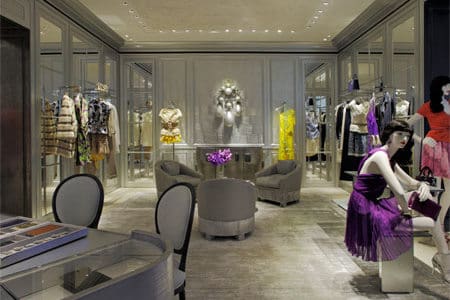
Michel Gutsatz, a brand strategy expert at The Scriptorium Company, explores Dior & Hermès’ very different retail strategies for penetrating the Asian market
The re-launched Dior boutique in Kowloon, Hong Kong
Michel Gutsatz, a brand strategy expert at The Scriptorium Company, explores Dior & Hermès’ very different retail strategies for penetrating the Asian market.
Two new boutique concepts perfectly illustrate the research luxury brands have been devoting to their “retail” formats. These two initiatives have seen the day in Asia – showing not only that these are the most important markets for luxury brands, but also that a brand is capable of being innovative.
Dior has just reopened its flagship store in Hong Kong (One Peking Road, Kowloon), where it offers, on three floors of more than 1000 m2, its entire collection for women (clothing, leather goods, footwear), babies and men – and its range of watches and jewellery. The only thing missing is its beauty products.

Dior’s Peking Road, Hong Kong boutique
Designed like a modern apartment (evoking its flagship store on Avenue Montaigne to a certain extent) it features all the codes of the mark, in grey with the same caning used for the floor in the “bags” section. Blending fashion and art, Dior projects itself as a lifestyle brand.
Hermes has done the opposite. Having noticed that its watches were too often sold in a multi-brand universe that did not correspond to the status of the brand (like at the airport in Shanghai!), the brand decided to test the shop-in-shops concept in department stores and boutiques, then created the La Montre Hermès boutiques: this enables it to valorise its history (its first watch dates back to 1928) and its watch-making expertise.

The first La Montre Hermès store, launched in Singapore
The first store was opened in Singapore, facing the Hermès boutique. The result was amazing: not only did the sales of the new boutique exceed the objectives that were initially projected, but sales of watches in the Hermès shop opposite increased by 25%! Several other shops followed: Taipei, and now Shanghai.
Both Dior and Hermès seek to enhance their history: the former, by regrouping most of its products in a unique location, a modernized mirror image of its original boutique; the latter, by exiting the multi-brand universe so as to be able to exploit its own brand story.
One question remains: when will their spectacles and beauty products (traditionally confined to their respective circuits) be included in the flagship lifestyle stores of these brands?

La Montre Hermès Singapore boutique









